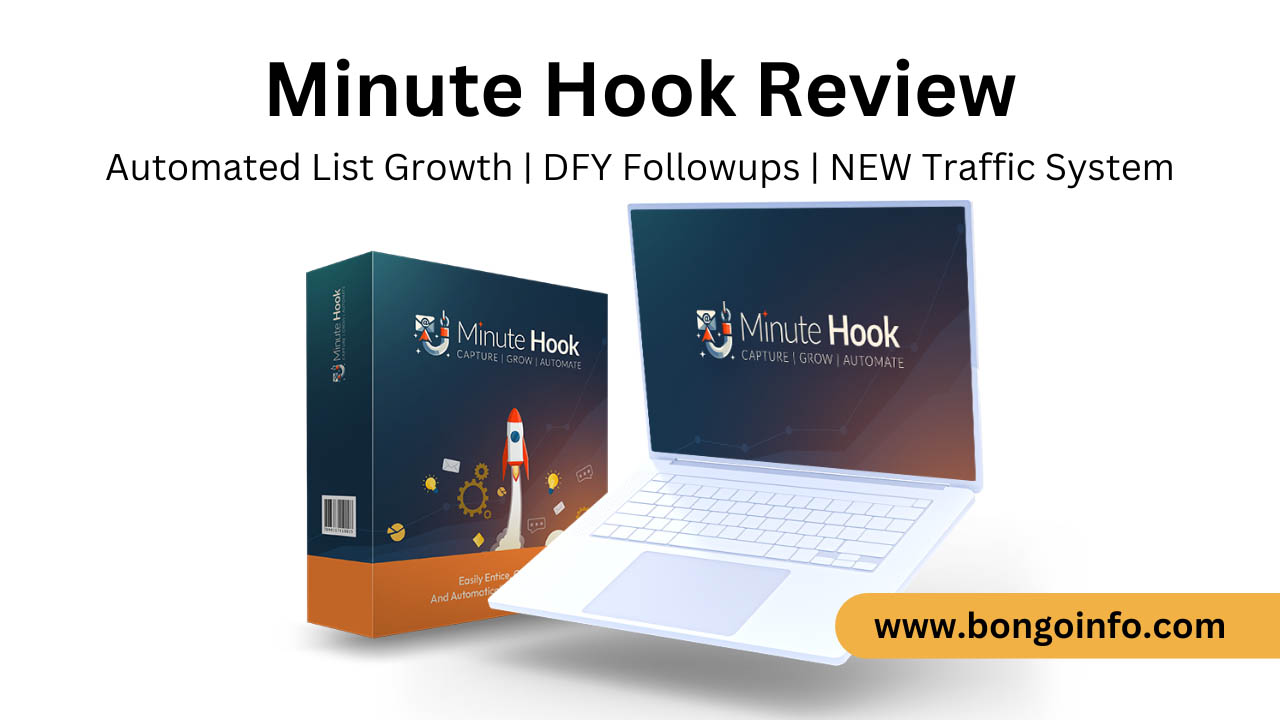SEO Boost in 30 Days: Show Your Company to the World
Search Engine Optimization (SEO) is the cornerstone of digital marketing, pivotal for any business aiming to increase its online visibility. In a world where competition is fierce, showing your company to the world requires a strategic, well-planned SEO approach. Our 30-day SEO plan is designed to guide you through a comprehensive journey of improving your website’s search engine rankings, ultimately driving more traffic and generating more leads. Over the next few weeks, you will gain actionable insights and step-by-step instructions to elevate your SEO game. Let’s embark on this journey together, starting with the foundational element of SEO – keyword research.

What is SEO?
SEO, or Search Engine Optimization, is the practice of improving your website to increase its visibility when people search for products or services related to your business on search engines like Google. SEO encompasses a range of strategies and techniques, including keyword research, content optimization, link building, and technical improvements, all aimed at boosting your website’s ranking in search engine results pages (SERPs).
At its core, SEO is about understanding what your target audience is searching for online, the words they use, and the type of content they wish to consume. By aligning your content and website structure with these search intents, you can attract more relevant traffic to your site. SEO is not a one-time effort but an ongoing process that requires constant monitoring, adjustment, and optimization to stay ahead of the competition and search engine algorithm updates.
Importance of SEO for Businesses
SEO is crucial because it makes your website more visible, which means more traffic and more opportunities to convert prospects into customers. Here are some key reasons why SEO is important for businesses:
- Increased Visibility and Traffic: Higher rankings on search engine results pages lead to increased visibility and attract more organic traffic. This means more potential customers visiting your site.
- Credibility and Trust: Websites that appear at the top of search results are often perceived as more credible and trustworthy. High rankings can boost your brand’s reputation and authority.
- Better User Experience: SEO involves optimizing various aspects of your website, such as loading speed, mobile-friendliness, and content quality, which enhance the overall user experience.
- Cost-Effective Marketing: Unlike paid advertising, which requires continuous investment, SEO delivers long-term results without ongoing costs. It’s a cost-effective way to generate organic traffic.
- Competitive Advantage: Implementing effective SEO strategies helps you stay ahead of competitors who may not be as focused on optimizing their online presence.
- Targeted Traffic: SEO helps attract visitors who are actively searching for products or services like yours, making them more likely to convert into customers.
By investing in SEO, you can achieve sustainable growth and establish a strong online presence that drives business success.
Keyword Research
Day 1: Understanding Your Audience
Knowing your audience is the first step towards effective keyword research. Start by defining your target audience: Who are they? What are their interests, demographics, and pain points? Create detailed buyer personas that encapsulate these attributes. Understanding your audience helps you tailor your SEO strategy to meet their needs and preferences.
Consider conducting surveys or utilizing social media analytics to gather data on your audience. This information will guide you in choosing keywords that resonate with your potential customers. Remember, the goal is to attract visitors who are genuinely interested in what you offer, leading to higher engagement and conversion rates.
Day 2: Identifying Seed Keywords
Seed keywords are the foundation of your keyword research. These are the primary terms related to your business that potential customers might use to find products or services like yours. Start with broad terms that describe your business offerings. For instance, if you run a bakery, seed keywords might include “bakery,” “fresh bread,” or “custom cakes.”
Utilize tools like Google Keyword Planner, SEMrush, or Ahrefs to input these seed keywords and generate a list of related terms. These tools provide valuable insights such as search volume, competition level, and trends over time. Compile a comprehensive list of potential keywords that align with your business goals.
Day 3: Expanding Keyword List
With your seed keywords in hand, it’s time to expand your list to include long-tail keywords. Long-tail keywords are longer, more specific phrases that often have lower search volumes but higher conversion rates. They cater to more specific search queries, such as “gluten-free birthday cakes in New York.”
Use keyword research tools to explore related terms and variations. Analyze search volume, competition, and relevance to your business. This expanded list will provide a broader range of keywords to target, helping you reach a wider audience and capture more specific search intents.
Day 4: Analyzing Competitors
Analyzing your competitors’ keyword strategies can provide valuable insights. Identify your top competitors by searching your primary keywords and noting the websites that consistently appear in top positions. Use tools like SEMrush or Ahrefs to analyze their keywords, content, and backlink profiles.
Look for gaps in their strategy that you can exploit. Are there keywords they are missing? What type of content is performing well for them? Understanding what works for your competitors can help you refine your own strategy and identify opportunities for differentiation.
Day 5: Finalizing Keywords
By now, you should have a robust list of potential keywords. It’s time to finalize your keyword strategy. Prioritize keywords based on relevance, search volume, and competition. Focus on a mix of short-tail and long-tail keywords to balance broad reach with targeted intent.
Create a keyword strategy document that outlines your primary and secondary keywords, along with their corresponding search volume and competition metrics. This document will serve as a reference throughout your SEO journey, guiding your content creation and optimization efforts.
On-Page Optimization
Day 6: Optimizing Meta Tags
Meta tags, including title tags and meta descriptions, are critical for on-page SEO. They provide search engines with information about your page content and influence click-through rates. A well-optimized title tag should be concise, include your primary keyword, and accurately describe the content of the page.
Meta descriptions, while not a direct ranking factor, impact user behavior. Craft compelling meta descriptions that incorporate your primary keyword and encourage users to click. Aim for around 150-160 characters to ensure your description is fully visible in search results.
Day 7: Header Tags Optimization
Header tags (H1, H2, H3, etc.) play a crucial role in structuring your content and signaling its importance to search engines. Your H1 tag should include the primary keyword and clearly state the main topic of the page. Subsequent header tags (H2, H3) should organize content into logical sections, making it easier for users to navigate and for search engines to understand the hierarchy of information.
Using header tags effectively improves both user experience and SEO. Ensure your headers are descriptive and relevant to the content they introduce. This not only aids in readability but also enhances keyword relevancy.
Day 8: Content Optimization
Optimizing your content for SEO involves integrating keywords naturally and maintaining readability. Focus on creating high-quality, informative content that provides value to your audience. Keyword placement should feel organic, avoiding keyword stuffing which can harm readability and SEO.
Aim to use your primary keyword in the first 100 words, in one or two subheadings, and naturally throughout the content. Additionally, consider related keywords and synonyms to enhance relevancy and capture a broader range of search queries. Remember, the primary goal is to serve your audience with valuable information.
Day 9: Image Optimization
Images enhance user experience but can slow down your site if not optimized. Use descriptive, keyword-rich file names and alt text to help search engines understand the content of your images. Alt text also improves accessibility, providing descriptions for visually impaired users.
Compress images to reduce file size without sacrificing quality. Tools like TinyPNG or ImageOptim can help with this. Optimized images load faster, improving user experience and potentially boosting your search engine rankings.
Day 10: Internal Linking
Internal linking helps distribute page authority throughout your site and improves navigation. Link to relevant content within your site using descriptive anchor text. This not only aids SEO but also keeps users engaged by guiding them to additional valuable content.
Aim for a balance between user experience and SEO. Ensure your internal links are contextually relevant and provide value to the reader. An effective internal linking strategy can enhance site structure, distribute link equity, and improve overall SEO performance.
Technical SEO
Day 11: Improving Site Speed
Site speed is a critical ranking factor and affects user experience. Slow-loading websites lead to higher bounce rates and lower engagement. Use tools like Google PageSpeed Insights or GTmetrix to analyze your site’s speed and identify areas for improvement.
Techniques to improve site speed include optimizing images, leveraging browser caching, and minifying CSS, JavaScript, and HTML. Additionally, consider using a Content Delivery Network (CDN) to reduce latency and improve load times for users across different geographical locations.
Day 12: Mobile-Friendliness
With mobile traffic surpassing desktop, having a mobile-friendly site is essential. Google’s Mobile-Friendly Test can help you assess your site’s mobile usability. Ensure your site is responsive, meaning it adapts to different screen sizes and provides a seamless user experience on all devices.
Key aspects of mobile optimization include readable text without zooming, easily tappable buttons, and content that fits within the screen without horizontal scrolling. Improving mobile usability enhances user experience and can positively impact your search engine rankings.
Day 13: Fixing Broken Link
Broken links negatively affect user experience and SEO. Use tools like Ahrefs, Screaming Frog, or Google Search Console to identify broken links on your site. Once identified, fix them by updating the link, redirecting to a relevant page, or removing the link if it’s no longer necessary.
Regularly auditing your site for broken links ensures a smooth user experience and helps maintain the integrity of your site’s structure. This practice not only improves SEO but also enhances overall site performance.
Day 14: XML Sitemaps
An XML sitemap helps search engines understand the structure of your website and find all your pages. Creating and submitting an XML sitemap to Google Search Console and Bing Webmaster Tools ensures that search engines can crawl and index your site efficiently.
Most CMS platforms, like WordPress, offer plugins (e.g., Yoast SEO) that automatically generate XML sitemaps. Regularly update your sitemap to include new content and changes to your site structure. An effective sitemap improves search engine visibility and indexing.
Day 15: Structured Data Markup
Structured data markup, or schema markup, helps search engines understand the content of your pages. Implementing schema can enhance your search listings with rich snippets, providing additional information like ratings, reviews, and event details.
Use Google’s Structured Data Markup Helper to generate schema markup for your site. Common types of schema include Article, Local Business, Product, and Event. Adding structured data can improve click-through rates and provide a competitive edge in search results.
Content Creation
Day 16: Content Planning
Content planning is essential for a consistent and effective content strategy. Start by creating a content calendar that outlines topics, keywords, and publishing dates. This helps you stay organized and ensures a steady flow of content.
Identify content themes that resonate with your audience and align with your business goals. Research trending topics and industry news to keep your content relevant and engaging. A well-planned content strategy ensures you cover a wide range of topics and cater to various audience needs.
Day 17: Writing High-Quality Content
High-quality content is the cornerstone of effective SEO. Focus on creating informative, engaging, and original content that provides real value to your audience. Well-written content not only attracts readers but also encourages sharing and backlinks.
Use a clear and concise writing style, breaking up text with headings, bullet points, and images to enhance readability. Ensure your content is free of grammatical errors and flows logically. High-quality content builds trust with your audience and improves your site’s authority.
Day 18: Incorporating Keywords
Incorporating keywords into your content should be natural and unobtrusive. Use your primary keyword in the title, introduction, and a few times throughout the content. Additionally, include related keywords and synonyms to cover a broader range of search queries.
Avoid keyword stuffing, which can harm readability and SEO. Focus on creating content that answers user queries and provides comprehensive information. Proper keyword incorporation ensures your content is both user-friendly and optimized for search engines.
Day 19: Using Multimedia
Multimedia elements like images, videos, and infographics can significantly enhance your content. They make your content more engaging and can help convey complex information more effectively. Videos, in particular, are highly engaging and can improve dwell time on your site.
Ensure your multimedia elements are optimized for SEO by using descriptive file names and alt text for images. Embed videos directly into your content and provide transcripts for accessibility and SEO benefits. Multimedia not only enriches your content but also improves user experience and SEO.
Day 20: Promoting Content
Creating great content is just the first step; promoting it is equally important. Use social media platforms to share your content and reach a wider audience. Engage with your followers by encouraging comments, shares, and likes.
Email marketing is another effective promotion strategy. Send newsletters with links to your latest content to keep your audience informed and engaged. Collaborate with industry influencers and bloggers to amplify your reach. Effective content promotion drives traffic and boosts your SEO efforts.
Link Building
Day 21: Understanding Backlinks
Backlinks are links from other websites to your site, and they play a crucial role in SEO. They are considered votes of confidence, signaling to search engines that your content is valuable and trustworthy. High-quality backlinks from reputable sites can significantly boost your search engine rankings.
Differentiate between dofollow and nofollow backlinks. Dofollow links pass link equity and contribute to SEO, while nofollow links do not. However, both types of links can drive traffic and enhance your site’s visibility.
Day 22: Identifying Link Opportunities
Identifying potential backlink opportunities involves researching sites that might be interested in linking to your content. Use tools like Moz, Ahrefs, or SEMrush to find sites that link to your competitors or industry-related content.
Look for websites with high domain authority and relevance to your niche. Opportunities can include guest blogging, resource pages, and industry directories. Building relationships with these sites can increase your chances of acquiring valuable backlinks.
Day 23: Outreach Strategies
Effective outreach is key to acquiring high-quality backlinks. Craft personalized outreach emails that clearly state the value of your content and why it’s relevant to the recipient’s audience. Highlight any unique insights, data, or perspectives your content offers.
Follow up on your initial outreach if you don’t receive a response. Building relationships with industry influencers and bloggers can also enhance your outreach efforts. Persistence and personalization are crucial for successful link-building outreach.
Day 24: Guest Blogging
Guest blogging involves writing articles for other websites in your industry. This not only helps you acquire backlinks but also positions you as an authority in your field. Identify reputable blogs that accept guest posts and align with your niche.
Pitch relevant, high-quality content ideas to these blogs. Ensure your guest posts provide value to their audience and include a link back to your site. Guest blogging is a win-win strategy that enhances your online presence and SEO.
Day 25: Monitoring Backlinks
Regularly monitoring your backlinks is essential to ensure they remain relevant and high-quality. Use tools like Google Search Console, Ahrefs, or Moz to track your backlinks. Look for any low-quality or spammy links that could harm your SEO.
Disavow harmful links using Google’s Disavow Tool to maintain a healthy backlink profile. Monitoring your backlinks helps you identify new opportunities and ensure your link-building efforts are paying off.
Performance Monitoring & Adjustment
Day 26: Setting Up Analytics
Tracking your SEO performance requires robust analytics tools. Set up Google Analytics and Google Search Console to monitor your site’s traffic, user behavior, and search performance. These tools provide valuable insights into how users interact with your site and which keywords drive traffic.
Configure goals and events in Google Analytics to track conversions, such as form submissions, purchases, or downloads. This data helps you measure the effectiveness of your SEO efforts and identify areas for improvement.
Day 27: Analyzing Data
Analyzing your SEO data involves looking at key metrics like organic traffic, bounce rate, average session duration, and keyword rankings. Use this data to understand how your site is performing and identify trends or patterns.
Pay attention to high-performing pages and keywords. Analyze why they are successful and how you can replicate that success across other pages. Conversely, identify low-performing pages and investigate potential issues or areas for optimization.
Day 28: Making Adjustments
Based on your data analysis, make informed adjustments to your SEO strategy. This could involve optimizing underperforming content, updating keywords, or improving technical aspects like site speed or mobile usability.
Continuous improvement is key to long-term SEO success. Regularly review and refine your strategy based on performance data and industry trends. Small, incremental changes can lead to significant improvements over time.
Day 29: Continuous Improvement
SEO is not a one-time effort but an ongoing process. Stay updated with the latest SEO trends and algorithm changes. Subscribe to industry blogs, attend webinars, and participate in SEO communities to keep your knowledge current.
Regularly audit your site for technical issues, update content, and refine your keyword strategy. Continuous learning and adaptation ensure your SEO efforts remain effective and your site continues to rank well.
Day 30: Reviewing Success
Reflect on your 30-day SEO journey and the progress you’ve made. Review the improvements in your search engine rankings, organic traffic, and user engagement. Celebrate your successes and acknowledge the hard work that went into achieving them.
Use this review to plan your future SEO strategies. Identify what worked well and what could be improved. Set new goals and continue to refine your approach. SEO is a long-term commitment, and consistent effort will yield lasting results.
Conclusion
In just 30 days, you’ve embarked on a comprehensive SEO journey that has laid a strong foundation for your business’s online visibility. From keyword research and on-page optimization to technical SEO, content creation, link building, and performance monitoring, you’ve covered all the essential aspects of SEO. Each step in this guide is designed to equip you with actionable insights and strategies to enhance your website’s search engine rankings and attract more organic traffic.
Remember, SEO is an ongoing process that requires continuous effort and adaptation. Search engine algorithms are constantly evolving, and staying updated with the latest trends and best practices is crucial for maintaining and improving your rankings. Regularly audit your site, update your content, and refine your keyword strategy to stay ahead of the competition.
Your dedication to this 30-day SEO plan will pay off in the form of increased visibility, higher rankings, and ultimately, more business. Celebrate the progress you’ve made and use this momentum to continue optimizing your site for even greater success.
Thank you for joining us on this SEO journey. For more tips and insights, check out our other blog posts and stay tuned for more valuable content. Together, we can show your company to the world! Keep striving for excellence, and watch your online presence grow.






